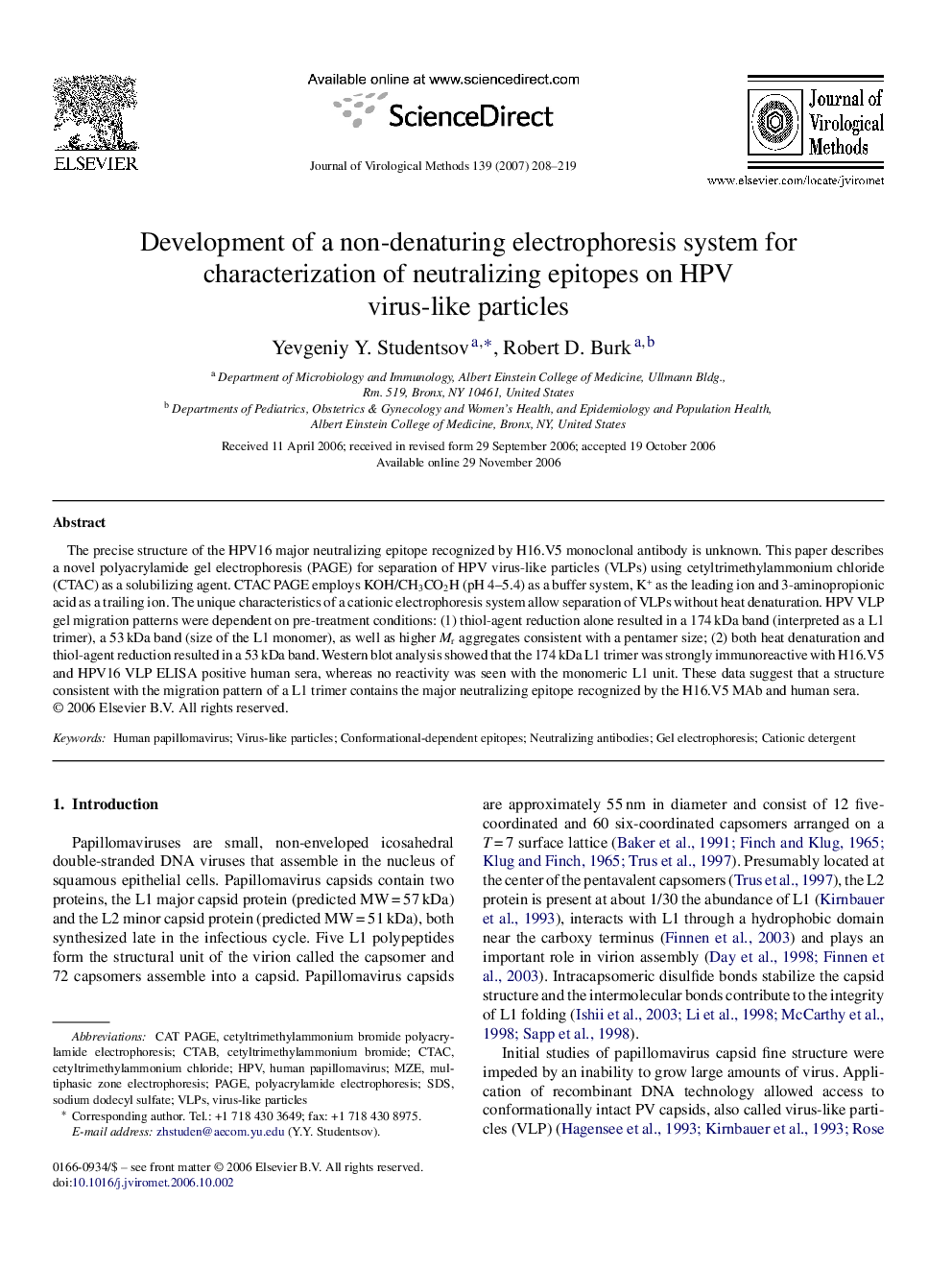| Article ID | Journal | Published Year | Pages | File Type |
|---|---|---|---|---|
| 3408297 | Journal of Virological Methods | 2007 | 12 Pages |
The precise structure of the HPV16 major neutralizing epitope recognized by H16.V5 monoclonal antibody is unknown. This paper describes a novel polyacrylamide gel electrophoresis (PAGE) for separation of HPV virus-like particles (VLPs) using cetyltrimethylammonium chloride (CTAC) as a solubilizing agent. CTAC PAGE employs KOH/CH3CO2H (pH 4–5.4) as a buffer system, K+ as the leading ion and 3-aminopropionic acid as a trailing ion. The unique characteristics of a cationic electrophoresis system allow separation of VLPs without heat denaturation. HPV VLP gel migration patterns were dependent on pre-treatment conditions: (1) thiol-agent reduction alone resulted in a 174 kDa band (interpreted as a L1 trimer), a 53 kDa band (size of the L1 monomer), as well as higher Mr aggregates consistent with a pentamer size; (2) both heat denaturation and thiol-agent reduction resulted in a 53 kDa band. Western blot analysis showed that the 174 kDa L1 trimer was strongly immunoreactive with H16.V5 and HPV16 VLP ELISA positive human sera, whereas no reactivity was seen with the monomeric L1 unit. These data suggest that a structure consistent with the migration pattern of a L1 trimer contains the major neutralizing epitope recognized by the H16.V5 MAb and human sera.
